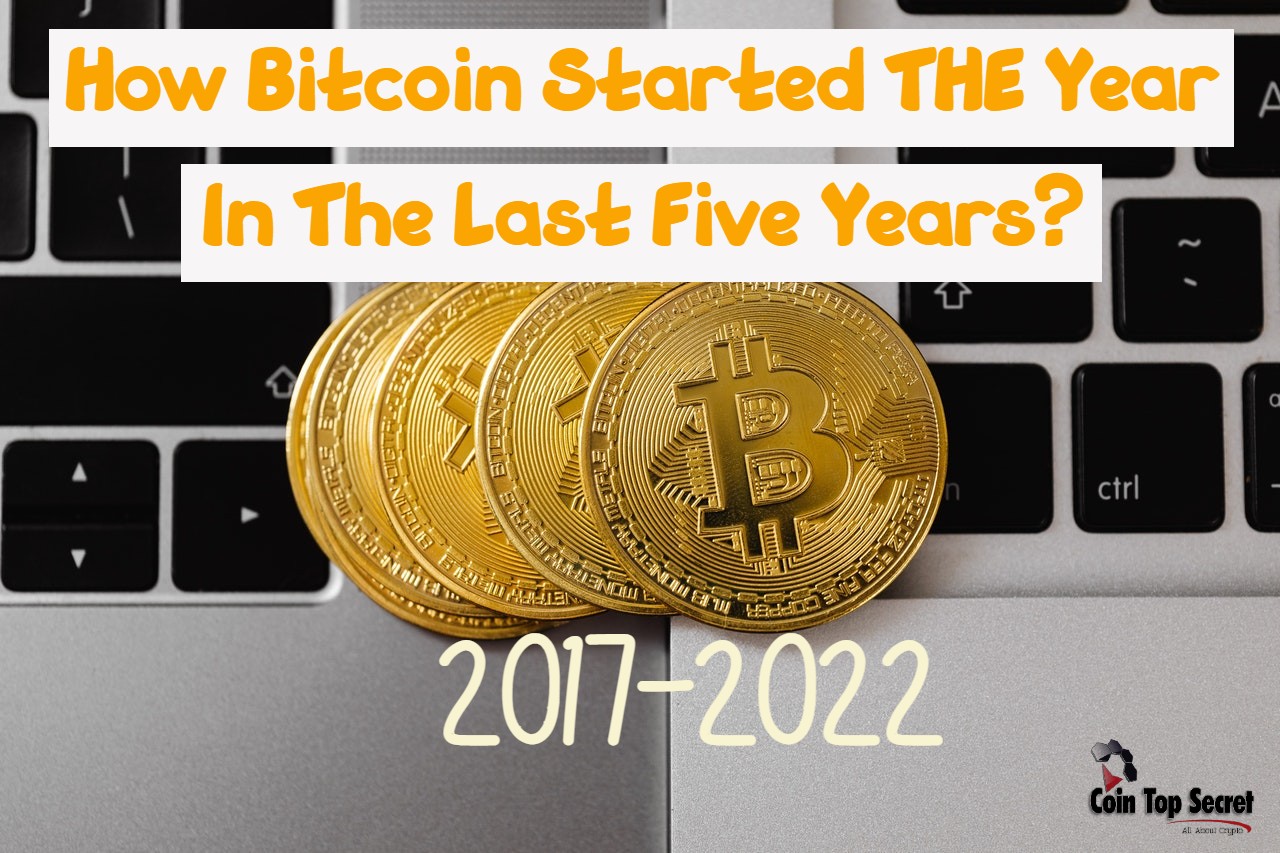Bitcoin at $87K: BTC Buying Opportunity or Dead Cat Bounce?
Key Takeaways
- Bitcoin’s recent return to $87,000 presents a critical question: is it a genuine buying opportunity fueled by strong fundamentals or a deceptive dead cat bounce leading to further declines?
- Technical indicators like volume and historical support/resistance levels are crucial for discerning the true nature of the price movement, with high-volume accumulation signaling stronger conviction.
- Global macroeconomic factors, including inflation and interest rates, significantly influence Bitcoin’s price, making it essential to consider the broader economic narrative.
- Long-term growth drivers like increasing institutional adoption and clearer regulatory frameworks are vital for Bitcoin’s stability and legitimacy, regardless of short-term volatility.
- Beyond price speculation, blockchain technology and Web3 offer profound opportunities for business transformation, driving efficiency, financial innovation, and new engagement models across industries.
Table of Contents
- Decoding the Price Action: Opportunity or Illusion?
- Technical Analysis: Reading the Market’s Tea Leaves
- Macroeconomic Headwinds and Tailwinds
- Institutional Adoption and Regulatory Clarity: The Long-Term Drivers
- Beyond Price: Connecting Crypto and Web3 to Business Transformation
- The Path Forward: Navigating Uncertainty with Strategic Vision
- Frequently Asked Questions (FAQ)
- Conclusion
The cryptocurrency market is a dynamic and often bewildering landscape, characterized by rapid shifts in sentiment and price action. One of the most pertinent questions echoing through the digital asset space right now revolves around Bitcoin’s recent price movements, particularly its return to the $87,000 mark. Is this a golden Bitcoin at $87K: BTC buying opportunity or dead cat bounce? For business professionals, entrepreneurs, and crypto enthusiasts alike, understanding the nuances of this question is crucial for navigating investment decisions, strategic planning, and discerning the broader implications for the digital economy.
The past few months have been a rollercoaster, with Bitcoin’s price tools showing levels not seen in several years, leading many to speculate on the potential for a significant relief rally. Yet, the memory of past market corrections looms large, prompting caution. To make informed decisions, we must delve into the technical indicators, market sentiment, macroeconomic factors, and the fundamental value proposition that underpin Bitcoin’s current trajectory.
Decoding the Price Action: Opportunity or Illusion?
At $87,000, Bitcoin finds itself at a critical juncture. The term “dead cat bounce” refers to a temporary, brief recovery in the price of a declining asset, followed by a continuation of the downtrend. It’s a deceptive rally that can lure unsuspecting investors into believing a recovery is underway, only for the market to fall further. Conversely, a “buying opportunity” signifies a chance to acquire an asset at a relatively low price, anticipating significant future appreciation based on strong underlying fundamentals and a positive long-term outlook.
The distinction between these two scenarios is paramount. If the $87,000 level represents a dead cat bounce, then market participants might expect further consolidation or even a deeper correction. This perspective often emerges from concerns about macroeconomic headwinds, lingering regulatory uncertainties, or a lack of strong, sustained buying pressure. On the other hand, if this is indeed a buying opportunity, it suggests that Bitcoin has found a strong support level, and the confluence of factors – such as increasing institutional adoption, technological advancements, and a maturing market infrastructure – points towards a sustained upward trend in the medium to long term.
For investors and businesses looking to allocate capital, timing is everything. A misjudgment can lead to significant losses or missed opportunities. Therefore, a comprehensive analysis that goes beyond surface-level observations is essential.
Technical Analysis: Reading the Market’s Tea Leaves
When Bitcoin’s price tools return to levels not seen in several years, as reported, technical analysts immediately scrutinize historical data for patterns and indicators. These “price tools” often refer to a combination of metrics like moving averages, Relative Strength Index (RSI), Fibonacci retracement levels, and volume profiles.
A key aspect of this analysis involves identifying potential support and resistance levels. If $87,000 aligns with a significant historical support level that held firm during previous market cycles, it could signal a strong foundation for a rebound. Conversely, if it’s merely a brief upward movement within a broader downtrend, technical indicators such as declining trading volume on the bounce or bearish divergences (where price makes a higher high but an indicator like RSI makes a lower high) could signal a dead cat bounce.
Volume is another critical indicator. A genuine relief rally or the beginning of a new uptrend is typically accompanied by robust buying volume, indicating strong conviction from market participants. A bounce on low volume, however, can be a red flag, suggesting a lack of broad-based interest and the potential for a quick reversal.
Expert Take:
“The current market structure around the $87,000 mark demands careful scrutiny. While some technical indicators suggest a potential bottom, the lack of sustained high-volume accumulation could indicate a lack of conviction from institutional players. Investors should watch for a clear break above key resistance levels accompanied by significant volume before confirming a true reversal.” – Leading Cryptocurrency Analyst
Macroeconomic Headwinds and Tailwinds
Beyond the charts, Bitcoin’s price is increasingly influenced by global macroeconomic conditions, just like traditional assets. Factors such as inflation rates, interest rate hikes by central banks, geopolitical events, and the overall health of the global economy play a significant role.
In periods of high inflation, Bitcoin has often been touted as a hedge due to its finite supply. However, aggressive interest rate hikes aimed at curbing inflation can make riskier assets like cryptocurrencies less attractive, as investors might prefer the safer, guaranteed returns offered by bonds and savings accounts. The tightening of global liquidity can divert capital away from speculative markets, contributing to downward pressure on asset prices.
Conversely, a more dovish stance from central banks, signals of easing inflation, or a resurgence of global economic growth could create a more favorable environment for Bitcoin. As institutions and large corporations increasingly integrate digital assets into their portfolios, their exposure to traditional market risks also grows. Therefore, understanding the broader economic narrative is vital for interpreting Bitcoin’s short-term movements.
Expert Take:
“Bitcoin’s journey to $87K reflects a complex interplay of short-term speculative movements and long-term fundamental strengths. While macroeconomic pressures present headwinds, the underlying technology continues to attract significant innovation and investment, suggesting any deep correction could indeed be a buying opportunity for those with a long-term horizon.” – Prominent Digital Asset Strategist
Institutional Adoption and Regulatory Clarity: The Long-Term Drivers
While short-term price movements can be volatile, the long-term bullish case for Bitcoin and the broader crypto market rests heavily on two pillars: institutional adoption and regulatory clarity.
Institutional players – hedge funds, asset managers, pension funds, and even sovereign wealth funds – are increasingly exploring or directly allocating capital to Bitcoin and other digital assets. The approval of spot Bitcoin ETFs in various jurisdictions, for example, has significantly lowered the barrier to entry for traditional investors, providing a regulated and accessible investment vehicle. This influx of institutional capital provides deeper liquidity, greater stability, and a stamp of legitimacy that can help mitigate extreme volatility over time.
Regulatory developments are equally critical. Clear, comprehensive, and balanced regulations can reduce uncertainty, foster innovation, and protect investors, thereby encouraging more mainstream participation. Ambiguous or overly restrictive regulations, however, can stifle growth and push innovation offshore. Governments worldwide are grappling with how to regulate this nascent industry, from consumer protection to taxation and anti-money laundering (AML) measures. Progress on this front is a significant tailwind for long-term growth.
For businesses and entrepreneurs, regulatory clarity also means a more predictable operating environment. It enables them to build robust compliance frameworks, develop new products and services, and integrate blockchain technology into their existing operations with greater confidence.
Beyond Price: Connecting Crypto and Web3 to Business Transformation
While the “buying opportunity or dead cat bounce” question dominates financial headlines, it’s crucial for business leaders to look beyond Bitcoin’s price charts and recognize the profound implications of blockchain solutions and Web3 developments for their organizations. The underlying technology that powers Bitcoin – blockchain – offers transformative potential across various sectors, regardless of short-term market fluctuations.
Business Efficiency and Operational Optimization
Blockchain’s inherent characteristics of transparency, immutability, and decentralization can revolutionize operational efficiency. Supply chain management, for instance, can be dramatically optimized by leveraging blockchain to track goods from origin to consumer, reducing fraud, improving traceability, and ensuring ethical sourcing. Smart contracts, self-executing agreements stored on the blockchain, can automate complex business processes, from escrow services to insurance claims, cutting down on administrative overhead, reducing human error, and accelerating transaction settlements.
- Example: A global logistics company could use a blockchain-based platform to record every step of a shipment, making it transparent to all stakeholders. This not only improves efficiency but also builds trust among partners and end-customers.
- Example: In real estate, tokenizing property ownership on a blockchain can streamline transactions, reduce legal fees, and make fractional ownership more accessible, fundamentally changing how assets are bought, sold, and managed.
Digital Transformation and Financial Innovation
Web3, the next iteration of the internet built on blockchain technology, is driving an explosion of digital transformation. It shifts control from centralized entities to individual users, fostering new business models, decentralized applications (dApps), and entirely new forms of digital ownership and interaction.
- Decentralized Finance (DeFi): DeFi platforms offer financial services like lending, borrowing, and trading without traditional intermediaries. For businesses, this opens up avenues for more efficient capital deployment, access to global liquidity pools, and potentially lower transaction costs. Companies can explore stablecoins for cross-border payments, mitigating foreign exchange risks and speeding up international settlements.
- Tokenization of Assets: Beyond real estate, almost any asset – from art and intellectual property to company shares and commodities – can be tokenized on a blockchain. This fractionalizes ownership, enhances liquidity, and provides new avenues for fundraising and investment. Entrepreneurs can issue security tokens to raise capital, offering investors programmable rights and transparent governance.
- Creator Economy and NFTs: Non-Fungible Tokens (NFTs) have moved beyond digital art. Businesses are leveraging NFTs for ticketing, loyalty programs, digital identities, and verifying authenticity of physical goods. This fosters deeper engagement with customers and creates new revenue streams in the digital realm.
Expert Take:
“The true long-term value of the crypto ecosystem lies not just in speculative asset prices but in the underlying blockchain infrastructure. Businesses that strategically integrate these technologies will gain a significant competitive advantage, unlocking new levels of efficiency, trust, and innovation across their operations and customer interactions.” – Blockchain Strategy Consultant
The Path Forward: Navigating Uncertainty with Strategic Vision
The question of whether Bitcoin at $87,000 is a buying opportunity or a dead cat bounce remains complex, with valid arguments on both sides. The short-term market is influenced by a myriad of factors, making definitive predictions challenging. For investors, a diversified approach, dollar-cost averaging, and a focus on long-term fundamentals are often recommended.
For business professionals and entrepreneurs, the critical takeaway extends beyond price speculation. The current market dynamics underscore the growing maturity and integration of digital assets into the global financial system. Regardless of Bitcoin’s immediate price trajectory, the underlying blockchain technology and the Web3 paradigm continue their relentless march towards transforming industries.
Organizations that proactively understand and strategically integrate blockchain solutions are positioning themselves for future success. This involves:
- Education and Awareness: Staying informed about the latest technological advancements and regulatory shifts.
- Pilot Programs: Experimenting with blockchain solutions in specific areas of their business, such as supply chain, payments, or data management.
- Strategic Partnerships: Collaborating with blockchain technology providers, FinTech companies, and other innovators.
- Risk Management: Developing robust frameworks for managing the unique risks associated with digital assets and blockchain technology.
While the market debates the immediate future of Bitcoin, the digital transformation fueled by blockchain and Web3 is an undeniable force. Whether $87,000 proves to be a temporary blip or a solid foundation, the imperative for businesses to engage with this technology remains stronger than ever. It’s an opportunity not just to invest in an asset, but to invest in the future of business itself.
Frequently Asked Questions (FAQ)
What is a dead cat bounce in crypto?
A dead cat bounce is a temporary, short-lived recovery in the price of a declining asset, which is then followed by a continuation of the downtrend. It can deceive investors into thinking a recovery is underway when the market is still in a bearish phase.
How can I distinguish a buying opportunity from a dead cat bounce?
Distinguishing between the two requires careful technical analysis. A genuine buying opportunity typically shows strong buying volume, breaks above key resistance levels, and is often supported by positive fundamental news or improving macroeconomic conditions. A dead cat bounce usually occurs on low volume and fails to sustain upward momentum, often showing bearish technical divergences.
What macroeconomic factors influence Bitcoin’s price?
Bitcoin’s price is influenced by global inflation rates, central bank interest rate policies, geopolitical events, and the overall health of the global economy. High inflation can make Bitcoin attractive as a hedge, but aggressive interest rate hikes can divert capital from riskier assets like crypto.
Why is blockchain technology important for businesses beyond Bitcoin’s price?
Blockchain offers transformative potential for business operations, irrespective of Bitcoin’s short-term price. It enhances efficiency, transparency, and security in supply chains, automates processes through smart contracts, enables new financial innovations like DeFi and asset tokenization, and fosters new engagement models in the Web3 creator economy.
Conclusion
The debate surrounding Bitcoin’s current price at $87,000—whether it represents a buying opportunity or a dead cat bounce—highlights the inherent volatility and complex dynamics of the cryptocurrency market. While short-term price movements are influenced by a myriad of technical and macroeconomic factors, the long-term trajectory of Bitcoin and the broader digital asset ecosystem is underpinned by robust institutional adoption and increasing regulatory clarity. For businesses and entrepreneurs, the critical insight extends beyond speculative trading; it lies in recognizing the profound and undeniable potential of blockchain technology and Web3 to drive operational efficiencies, unlock new financial innovations, and reshape customer interactions across all industries. Engaging strategically with these transformative technologies is not just an option but an imperative for future success, making the current period an opportunity to invest not just in an asset, but in the future of business itself.




